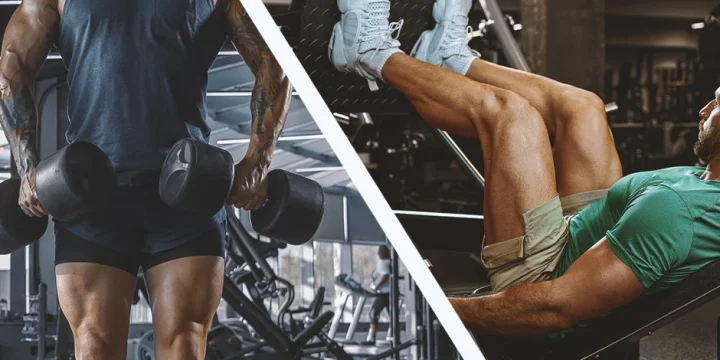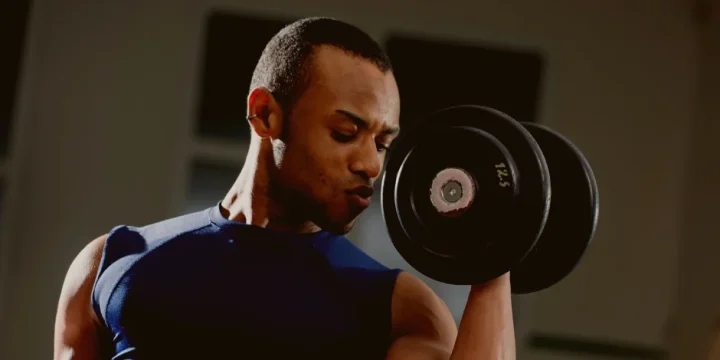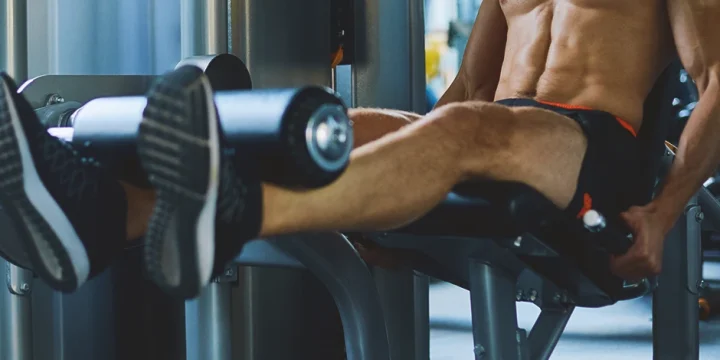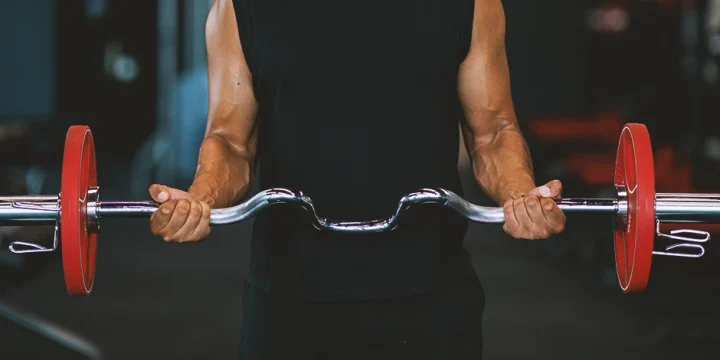Mastering pull-ups can be challenging due to their demanding nature, making it crucial to begin with alternative exercises to build the necessary strength.
As a personal trainer with more than ten years of experience, I have curated a comprehensive list of the best pull-up alternatives that target the same muscles but with less difficulty.
By including these exercises in your routine, you can gradually build strength and prepare yourself for performing the traditional pull-up.
Quick Summary
- The best pull-up alternatives include the chin-up, bent-over row, dumbbell pull-over, lat pull-down, resistance band pull-apart, and inverted bodyweight row.
- The pull-up exercise can help develop a muscular and well-defined back, along with an increase in endurance.
- A study from Halmstad University found that during chin-up exercises, the biceps brachii showed a 4.8 percent decrease in muscle activity, while the rectus abdominis displayed a 2.1 percent increase compared to lat pulldown exercises.
- As a fitness trainer, I recommend clients perform alternative pull-up exercises 2 to 3 times a week, allowing their muscles at least a twenty-four-hour break between back workouts for proper rest and recovery.
8 Pull-Up Alternatives

Here is a list of the best pull-up alternatives that I personally find effective but less challenging.
1. Bent-Over Row
The bent over row is a compound exercise targeting the upper and middle back muscles, involving a bent position and pulling a weight toward the torso.
How to do this exercise:
- Stand with your feet shoulder-width apart.
- Hold a dumbbell in each hand with an overhand grip.
- Hinge at your hips, keeping a straight back.
- Engage your core as you lower your torso to a 45-degree angle.
- Pull the weight towards your torso while contracting your shoulder blades.
- Slowly lower the weight back to the starting position.
- Complete three sets of twelve reps.
2. Dumbbell Pull-Overs
Dumbbell pull-overs involve extending arms over the head with a dumbbell, targeting the chest, back, and triceps muscles.
How to do this exercise:
- Lie on a bench with your feet firmly planted on the floor, holding a dumbbell.
- Hold the dumbbell vertically above your torso and extend your arms.
- Lower the weights behind your head, maintaining a slight bend in your elbows.
- Hold for two seconds when your arms align with your head and body.
- Lift the weights back above your torso to return to the starting position.
- Repeat until you complete three sets of twelve reps.
“If one side of your body is stronger than the other or if you have greater flexibility on one side, you may notice that one arm extends further over your head or moves faster than the other. Strive to move both arms simultaneously.”
- Malia Frey, Certified Health Coach
Related: 8 Best Upper Body Dumbbell Workout
3. Chin Ups

Chin-ups are a bodyweight exercise where palms face towards you during the pull-up, primarily targeting the biceps, upper back, and lats.
How to do this exercise:
- Grab a chin-up bar underhanded, hands shoulder-width apart.
- Hang with fully extended arms, bending your legs if needed.
- Pull up using your back, shoulders, and arms until your chin is above the bar.
- Lower yourself slowly until arms are straight.
- Complete three sets of eight to twelve reps.
Related: Chin-up vs Pull-up: Key Differences and Why It Matters
4. Lat Pulldowns
Lat pulldowns are performed using a cable machine to target the latissimus dorsi muscles and upper back by pulling a bar down towards the chest.
How to do this exercise:
- Sit on the lat pull-down machine with feet on the floor.
- Secure the thigh pad against your thighs.
- Grab the bar with a wide overhand grip.
- Pull the bar down toward your torso, keeping elbows close.
- Pause, squeezing your shoulder blades, then slowly return to the starting position.
- Complete three sets of twelve reps.
“Stop at the point where your elbows would need to go backward to continue pulling the cable down. If the elbows go backward, it will put excessive stress on the shoulder joint. You should only lower the bar to your chin or just below.”
- Paul Rogers, Personal Trainer
5. Resistance Band Pull-Aparts

Resistance band pull-aparts focus on the shoulders and upper back by pulling a resistance band apart horizontally at chest level.
How to do this exercise:
- Stand with your feet shoulder-width apart.
- Grab a resistance band with an overhand grip in front of you.
- Pull the band out laterally while squeezing your shoulder blades.
- Keep your arms straight.
- Gradually allow the band to come back to the starting position.
- Repeat until you reach three sets of twelve reps.
Read more: Best Resistance Band for Home Gyms: Reviewed
6. Seated Row
The seated row is a machine-based exercise where you pull a handle towards you, targeting the muscles in the upper and middle back, as well as the biceps.
How to do this exercise:
- Sit on the machine, feet on the footrests.
- Grab the handle, pulling it towards your hips with a straight back and shoulders back.
- Pause, squeezing your shoulder blades, and keep your chest lifted.
- Return to the initial position by straightening your arms.
- Complete three sets of twelve reps.
“Keep your elbows against your body during the pulling phase (except during the wide-grip row). Avoid lifting your elbows up and out, which engages the biceps instead of the lats and rhomboids.”
- Kristen Munez, Health Journalist
7. Renegade Row

The renegade row is a challenging exercise performed in a plank position with dumbbells, emphasizing the muscles of the back, core, and arms through alternating rowing motions.
How to do this exercise:
- Start in a plank on a workout mat, holding dumbbells in each hand.
- Keep feet shoulder-width apart, maintaining square hips and shoulders.
- Pull the dumbbell up towards your armpit and past your hip.
- Return the dumbbell to the ground, then repeat on the other side.
- Complete three sets of twelve reps.
8. Inverted Bodyweight Rows
Inverted bodyweight rows involve horizontal pulling by suspending the body at an angle and pulling the chest towards a bar, targeting the muscles of the upper back, shoulders, and arms.
How to do this exercise:
- Adjust the barbell in the squat rack for lying down.
- Lift hips off the ground, ensuring your back doesn’t touch.
- Pull yourself to the rings, keeping a tight core and a straight body.
- Lower yourself slowly to return to the starting position.
- Complete three sets of twelve reps.
“Pull the bar towards the middle of your chest. Don’t pull the bar up towards your throat, or down towards your belly button.”
- Steve Kamb, Fitness Expert
Also read: 9 Best Rowing Exercises
What Are the Benefits of Pull-Ups?

The benefits of pull-ups are improved upper body muscle mass, grip strength, and performance in the most demanding sports.
- Improve grip strength: One of the most significant advantages is improving grip strength, which is essential for weightlifting.
- Increased upper body strength and muscle mass: Pull-ups help to increase upper body muscle mass, particularly in the back muscles such as the latissimus dorsi, trapezius, thoracic erector spinae, and infraspinatus.
- Enhanced performance in activities requiring high relative strength levels: Pull-ups can improve your performance in demanding activities, such as swimming, gymnastics, and pole vaulting, according to the Strength and Conditioning Journal [1].
Related posts:
Common Mistakes and Tips To Avoid Them
Having tips to avoid common mistakes in working out is important as it helps optimize exercise effectiveness, reduces the risk of injury, and ensures proper engagement of targeted muscles, promoting overall fitness success.
Incorrect Form: According to Harvard Medical School, poor posture during workouts can result in reduced exercise effectiveness and an increased risk of injury. To address this, I recommend maintaining a straight back and square shoulders throughout the exercise, avoiding a curved posture [2].
Rushing Through the Exercise: Rushing through the exercise compromises proper muscle engagement, diminishes the effectiveness of the workout, and increases the risk of injury. To avoid this, I suggest taking the time to perform each repetition with control, focusing on a slow and deliberate movement.
Gripping the Bar Incorrectly: Incorrectly gripping the bar can lead to strained wrists, reduced exercise effectiveness, and impeded engagement of the targeted muscles. To fix this, I recommend ensuring hands are evenly spaced with palms facing away from the body.
Tips for Improving Your Calisthenics Leg Exercises

To improve your calisthenics leg exercises:
- Incorporate Isometric Exercises - Isometric exercises like isometric lunges and hollow holds can help you increase your strength and avoid plateaus.
- Use maximal contractions - Utilizing your mind-muscle connection to contract your muscles as forcefully as possible. This technique enhances muscle activation and generates a heightened stimulus, all without the need for weights.
- Incorporate a rest day - Provide your body with at least twenty four hours of rest between workout sessions for adequate time for your muscles to repair and rebuild.
As a fitness trainer, I encourage clients to set achievable goals, enhance their motivation, and track progress by maintaining an exercise journal or calendar, as supported by research from Medical News Today [3].
FAQs
How Often Should You Do Pull-Up Alternatives?
You should do pull-up alternatives two to three times per week. It’s essential to allow twenty-four to forty-eight hours of rest in between these workouts to allow your muscles to recover and rebuild.
What Muscles Do Pull-Ups Work?
The muscles that pull-ups work are the latissimus dorsi, biceps brachii, rear deltoids, trapezius, and rhomboids.
References:
- https://journals.lww.com/nsca-scj/fulltext/2014/06000/the_pull_up.14.aspx
- https://www.health.harvard.edu/staying-healthy/stop-making-these-common-workout-mistakes
- https://www.medicalnewstoday.com/articles/calisthenics#tips-for-beginners
About The Author
You May Also Like






